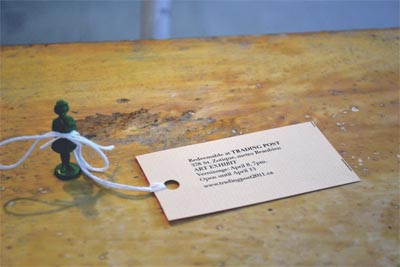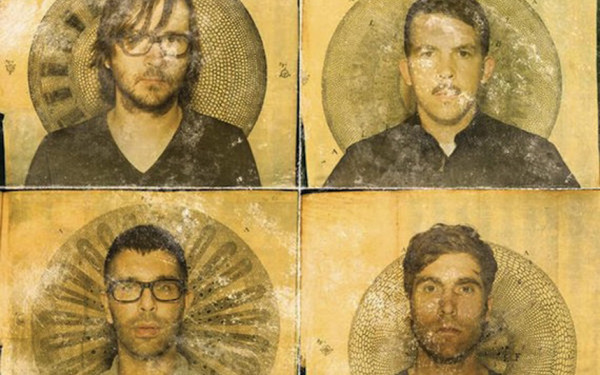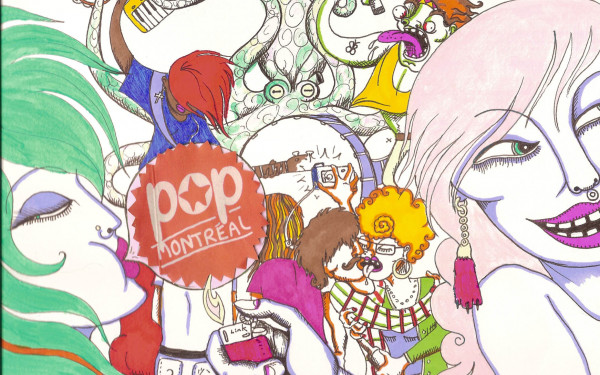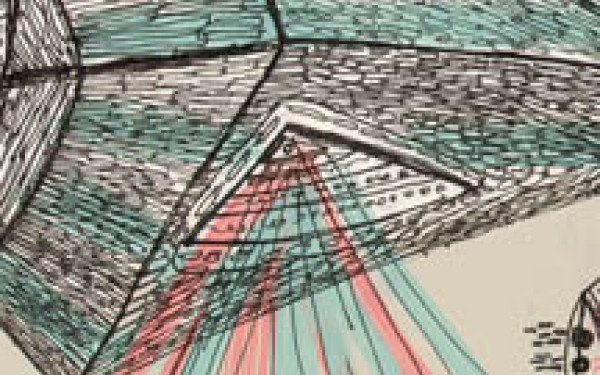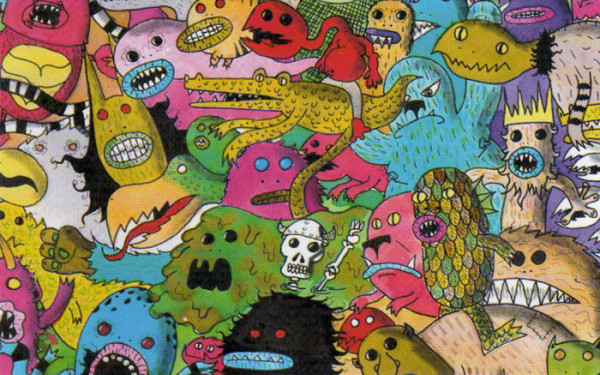The Trading Post
ARTX Students Want You to Leave Your Wallet at Home
How much value do you place on your possessions? Does our current perception of monetary value make sense? Have we de-valued things like human connection and basic survival tools?
The Trading Post, an exhibition that has been produced by Concordia’s Fine Arts department’s ARTX 399 class, aims to investigate questions like these. The exhibit invites its audience to trade goods or information for unique objects and artwork. The idea reflects back on our history of colonialism and the evolution of the value of currency that ensued.
The class worked closely on the project with their professor, Lorraine Oades, a well-known artistic figure in Montreal whose work has been included in exhibitions across Canada and internationally. Oades assigned the collaborative, site-specific project.
The final exhibit has undergone many developments since the group started out. “We forget how we got there, we just know we did,” said Rebecca McFarlane. Her work, entitled “How to Survive Death,” focuses on the attainment of legacy through objects and art, “a survivalship through objects.” She will be trading 100 sculptures of Styrofoam mountains that symbolize resilience from death.
The work of another student, Veronica Diniz, focuses on items that can be necessary for survival: clothing.
Clothing has the ability to protect someone from hypothermia in the frigid wilderness, for example. These items have been deconstructed to counteract their usefulness. Diniz uses relatable items to really conceptualize the theme of her project.
Another piece, Sam Unger’s project, entitled “Gaybourhood Watch Etc.,” attempts to form a social network that can’t be accessed on a bright laptop screen, or in a loud and sweaty bar. Unger’s project focuses on the dynamic of trading information. “Gaybourhood Watch” is about face time, humanness, and assembling a group of people (queers and allies) who seek to connect with other individuals with similar objectives; to create safe places in neighborhoods and facilitate some good ol’ fashioned hangouts.
The array of contemporary, integrated art pieces all feature different aesthetics, practices, and mediums, including performance, sculpture, audio and video. The challenge for students was finding a common ground to guide the curating of the exhibit. A semester’s worth of conceptualization was eventually narrowed down to the trading post theme, which is interpreted by the students in many different ways.
The exhibit is a fairly site-specific installation, because the students needed a space that could accommodate a variety of individual projects. While the space they settled on, a storefront on St. Zotique St., functions in this regard, the exhibit is not limited to the storefront. In some cases, the site acts merely as a starting point for affiliated satellite projects and events that will be dispersed around the city.
The ARTX 399 students pooled their talents from outside of the course’s requirements to orchestrate fundraising events, design a website, write and distribute press releases, as well as facilitate the overall setup and exposure of the show. Advertisements for the event can be found around campus, where the group cleverly placed price tag-shaped event information tickets on objects around the school, reiterating the idea of the fundamental significance of objects and information as elements of their trading post theme.
Many of the students will be sustaining their projects in further months. The vernissage will act as a launch date for certain projects, such as Unger’s “Gaybourhood Watch.”
The objective of the event is to trade everything—whether it be secret information, your favourite possession, or even simple conversation.
The Trading Post / Projet Troc vernissage / 378 St. Zotique Est / April 8 / 7-11pm. Check out their website at tradingpost2011.ca/
This article originally appeared in Volume 31, Issue 29, published April 5, 2011.

